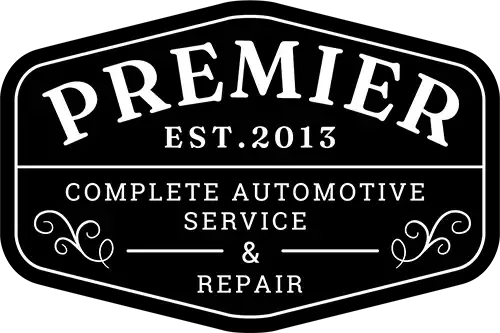Understanding Your Car’s Check Engine Light: Common Causes & What to Do
Understanding Your Car's Check Engine Light: Common Causes & What to Do
The check engine light is one of the most important warning signs in your car. When it comes on, it can leave you feeling worried. Is it something simple, or is it a big problem? Understanding what your check engine light means and how to respond can help you avoid costly repairs and keep your car running smoothly.
In this blog, we’ll explain what the check engine light is, common reasons it might turn on, and what you should do when you see it.
What is the Check Engine Light?
The check engine light is part of your car’s onboard diagnostic system (also known as OBD). This system constantly monitors your vehicle’s performance. When it detects something wrong with the engine or emissions system, the check engine light turns on.
There are two types of check engine lights:
- A solid light – This means there’s a problem, but it’s not an emergency. You should get your car checked soon.
- A flashing light – This is serious! It could mean a major issue that could damage your engine. Pull over immediately and get your car to a repair shop.
Common Causes of a Check Engine Light
There are many reasons the check engine light might come on. Here are some of the most common ones:
- Loose or Damaged Gas Cap
Believe it or not, a loose or damaged gas cap is one of the top reasons for a check engine light. The gas cap keeps fuel from evaporating and helps maintain proper pressure in your fuel system. If it’s loose or cracked, your car will alert you.
What to do: Check the cap and tighten it. If the light doesn’t turn off after a few drives, you may need a new one. - Faulty Oxygen Sensor
Your car’s oxygen sensor monitors how much oxygen is in the exhaust. If it fails, your car might burn more fuel than needed, which reduces gas mileage and increases emissions.
What to do: Replace the sensor as soon as possible. Driving too long with a bad oxygen sensor can damage other parts of your engine. - Worn Spark Plugs or Ignition Coils
Spark plugs ignite the fuel-air mixture in your engine. When they wear out, they can cause misfires, making your engine run rough or lose power. Ignition coils, which supply power to the spark plugs, can also fail.
What to do: Replace spark plugs and ignition coils regularly as part of routine maintenance. If your car is misfiring, get it checked quickly. - Malfunctioning Mass Airflow Sensor
The mass airflow sensor helps control the air-fuel mixture. When it fails, your car may run poorly or stall. It can also hurt your fuel economy.
What to do: Replace the sensor and have the air filter checked, too. Keeping your air filter clean can prevent this problem. - Catalytic Converter Problems
The catalytic converter reduces harmful emissions from your car. When it fails, you might notice poor gas mileage, reduced performance, or a strong smell of rotten eggs.
What to do: Catalytic converter repairs can be expensive, so get it checked right away. Regular maintenance, like oil changes, can help prevent this issue.
What to Do When the Check Engine Light Comes On
If your check engine light turns on, don’t panic. Follow these steps to figure out what to do next:
- Check the Gas Cap
This is the easiest and quickest fix. Make sure the gas cap is tight. If it was loose, the light might turn off after a few drives. - Pay Attention to Your Car’s Performance
Is your car running differently? If it’s driving normally, it might not be an urgent problem, but you should still get it checked soon. If it’s running rough, stalling, or losing power, stop driving and call for Premier Auto Care, we are happy to help. - Get a Diagnostic Check
A diagnostic scan can read the trouble codes stored in your car’s computer. These codes give clues about what’s wrong. At Premier Auto Care in Titusville, FL, we have the tools to diagnose and repair the issue quickly. - Don’t Ignore the Light
Ignoring the check engine light can turn a small problem into a big one. For example, a bad oxygen sensor can lead to damage to your catalytic converter, which is much more expensive to replace.
Can You Drive with the Check Engine Light On?
It depends on the problem. If the light is solid and your car seems to be running fine, it’s usually safe to drive a short distance to a repair shop. But if the light is flashing or your car is acting strangely, it’s best to stop driving and call us for help.
How Premier Auto Care Can Help
When your check engine light turns on, you don’t have to figure it out alone. At Premier Auto Care in Titusville, FL, we specialize in diagnosing and fixing check engine light issues. Our experienced technicians will run a full diagnostic scan, explain what’s wrong, and recommend the best solution.
We’re proud to be a trusted name in our community, helping drivers like you keep their cars safe and reliable. Whether it’s a simple fix or a major repair, we’ve got you covered.
Conclusion
The check engine light is your car’s way of asking for help. Understanding what it means and how to respond can save you stress and expensive repairs. Remember, a flashing light means urgent attention, while a solid light still needs to be checked soon.
If your check engine light is on, don’t wait—bring your car to Premier Auto Care in Titusville, FL. We’ll help you get back on the road with confidence!

